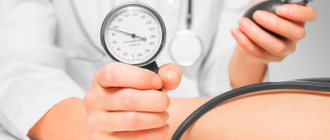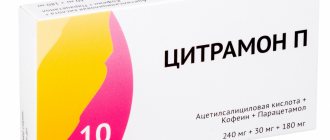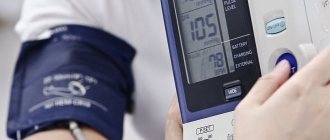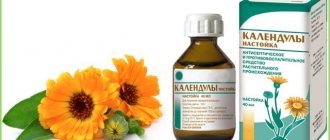- How does it affect blood pressure?
- General benefits of pumpkin for hypertension
- Recipes for blood pressure
- Pumpkin seeds and oil
- Cautions
Pumpkin contains many vitamins and minerals and is also low in calories, so it is often used in folk medicine, in particular to normalize blood pressure. For the same purposes, you can also take vegetable seeds and their oil. Find out below what effect pumpkin has on blood pressure, and what recipes you should pay attention to.
How does it affect blood pressure?
Pumpkin is a great helper in the treatment of cardiovascular diseases, including such vascular problems as arterial hypertension. The fact is that it contains antioxidants that have the following properties:
- reduce the level of “bad” cholesterol in the blood, high levels of which can lead to a heart attack;
- have a diuretic effect, removing excess salt and fluid from the body;
- cleanse the body of toxins and waste that cause heart failure.
Thanks to these actions, pumpkin helps lower blood pressure, so it can be used specifically for hypertension. It can be constantly included in various dishes to avoid pressure surges. This will improve blood circulation and supply the brain with oxygen.
It is important to note that pumpkin is not a medicine that will completely cure hypertension. It is advisable to use it to maintain a stable state of health and prevent complications of the disease.
Effect on pressure
Pumpkin lowers blood pressure. But this does not happen right away. To achieve a positive result, you need to use it daily.
The vegetable contains substances that have a strengthening effect on the cardiovascular system. They improve myocardial activity and increase vascular elasticity. At the same time, pumpkin also provides:
- removal of excess fluid from the body (has a diuretic effect);
- cleansing of toxins, protection from free radicals that provoke the development of heart failure;
- pumpkin lowers cholesterol levels.
Such actions help normalize blood pressure and prevent hypertensive crisis. However, eating pumpkin should not be the only method of treating hypertension. It can only be used to maintain blood pressure (taking medications prescribed by a doctor is mandatory) and to prevent complications.
General benefits of pumpkin for hypertension
Pumpkin has a composition similar to many multivitamin complexes. So, it consists of calcium, iron, potassium, vitamins B, A, C, D, E, PP, F and T. In addition, it is a low-calorie product - no more than 100 kcal per 100 g of pulp. This means that it can be used on a regular basis even by people who have problems with excess weight.
Thanks to its composition, pumpkin will help normalize blood pressure in hypertension and contribute to the following processes:
- improving digestion and metabolism due to fiber content;
- relief of pain in the presence of inflammatory diseases of the gastrointestinal tract with high acidity;
- increasing hemoglobin levels and improving blood clotting, which is especially useful for people with anemia and anemia;
- improved visual acuity thanks to carotene;
- dissolution of stones in urolithiasis;
- strengthening the body's defenses, since pumpkin is a natural immunomodulator.
To get the full benefit of pumpkin, it can be consumed either fresh or boiled. In addition, you can prepare juices, decoctions and infusions. At the same time, you should not abuse pumpkin remedies, since in this case you can provoke disturbances in the functioning of the stomach and pancreas.
Composition, properties
Pumpkin is rich in calcium, iron, potassium, vitamins A, B, C, D, F, E, PP. Nutritional value (100 g) – 100 kcal. Has the following properties:
- improves digestion;
- normalizes metabolism;
- suppresses inflammatory processes in the gastrointestinal tract;
- reduces stomach acidity;
- increases hemoglobin levels;
- normalizes blood clotting;
- improves vision;
- dissolves stones in urolithiasis;
- strengthens the body's protective functions.
The highest concentration of nutrients is found in fresh pumpkin. But boiled, stewed, baked vegetables also bring many benefits to the body. Alternative medicine suggests the use of decoctions, juices, infusions from the pulp/seeds of the product. They help restore the functioning of the gastrointestinal tract, increase immunity, and rapid recovery from acute respiratory viral infections, acute respiratory infections, and influenza.
Recipes for blood pressure
In folk medicine, they offer the following recipes with pumpkin to normalize blood pressure and prevent jumps in its levels:
- Raw pulp . If there are no problems with your stomach, you can eat raw pumpkin. Initially, the daily norm is 20 g of pulp, which must be eaten before meals. Gradually increase the volume to 150 g, dividing into 3 doses. Taking the raw pulp will help not only against hypertension, but also against arrhythmia, bronchitis and atherosclerosis.
- Juice . To prepare it, just grate the pulp on a medium grater, and then squeeze out the juice using gauze. For hypertension, it is enough to take 100 ml of freshly squeezed juice every day. If its taste seems too tart, you can dilute it with the same amount of boiled cold water or another juice, such as apple juice.
Pumpkin juice will help eliminate insomnia and weakness, as well as improve performance.
- Porridge with lemon . Pass 500 g of raw pumpkin pulp with 1 lemon through a meat grinder without peeling. Add 0.5 kg of sugar or honey to the resulting pulp, mix and store in the refrigerator with the lid closed. There is 1 tbsp. l. before eating. With long-term use, you can normalize blood pressure for a long time.
- Stem decoction . If you collect dry cuttings in the fall, you can prepare a decoction from them. To do this, pour 2-3 stems (about 20 g) with a glass of water and boil for 2-3 minutes. Cool the broth and drink throughout the day. It has a strong diuretic effect, so it lowers blood pressure and also relieves swelling in heart and kidney diseases.
- Pulp with honey . The recipe is especially effective in cases of chronic hypertension. You need to take a small pumpkin, cut off the top and scoop out all the contents with a spoon, combine with 1 liter of honey, mix and return to the “pumpkin”. Transfer to a cool, dark place and leave for 14 days. Eat 50 g twice a day.
- Porridge with raisins and wheat . You need to grind 200 g of pulp, combine with 50 g of raisins and the same amount of sprouted wheat. Mix and add 1 tbsp. l. honey The mixture can be crushed with a blender to obtain a homogeneous mass. You need to eat it on an empty stomach, 1 tbsp. l. per day for a month.
If it is difficult to drink pumpkin juice, a hypertensive patient can prepare a milkshake based on the vegetable according to the recipe from the video:
Does pumpkin increase or decrease blood pressure?
Is it possible to eat pumpkin if you have hypertension?
What beneficial properties and contraindications should you pay attention to? How does pumpkin affect blood pressure? We will examine these and a number of other questions in this article. Nowadays, many summer residents are engaged in the cultivation of this vegetable, brought to Europe in the 16th century by the Spaniards. More than 5 thousand years ago, pumpkin was already cultivated by the inhabitants of South America. Now it is difficult to imagine a garden bed without this herbaceous plant, which boasts a rich composition. Content:
Useful properties Contraindications Pumpkin and blood pressure Recipes for hypertension
The orange vegetable contains vitamins B, A, T, C, E, PP, potassium, magnesium, iron, calcium and other mineral components, fiber, and pectins. The dietary product (23 kcal per 100 g) promotes weight loss, and the vegetable is superior to apples in iron content. The rare vitamin K contained in pumpkin normalizes blood clotting, and vitamin T improves metabolic processes in the body. This prevents obesity because it helps the body absorb heavy foods.
The beneficial properties of pumpkin are that it is a source of fiber, which improves intestinal motility and normalizes the functionality of the gastrointestinal tract. Its choleretic effect is used for diseases of the gallbladder and liver. The product removes excess cholesterol and toxins from the body, is an antiemetic, and is easily absorbed.
Due to its rich composition, pumpkin is recommended to be included in the diet of people who have suffered from vascular and heart diseases.
The anti-inflammatory properties of the vegetable are used for eczema, wounds, burns, and rashes. It strengthens the immune system. The medicinal properties of pumpkin allow you to resist viral diseases. Since the vegetable contains carotene, it is recommended to eat it if you have vision problems. It is also worth noting that eating pumpkin reduces the risk of pathological cell degeneration. In cosmetology, it is added to masks, lotions, balms, creams and shampoos, since the rich composition of the vegetable exhibits a rejuvenating effect.
Pumpkin harm can be observed if the vegetable is consumed for intestinal colic, gastritis with low acidity, and acid-base balance disorders. The raw product is contraindicated in case of elevated blood glucose levels due to the high carbohydrate and sugar content. It is not recommended to eat pumpkin if you have ulcerative lesions of the gastrointestinal tract. Pumpkin can harm the body if there is an individual intolerance to the components of the vegetable.
Many lovers of orange vegetables are concerned about how the product affects the body with high blood pressure. Recently, cases of arterial hypertension have been increasingly recorded, which has become significantly “younger” over several decades. If in the last century hypertension was more often diagnosed at 50-60 years of age, now people complain of high blood pressure at 30-40 years of age.
Thanks to its antioxidant properties, the vegetable removes excess cholesterol from the body and strengthens the walls of blood vessels. Pumpkin has a diuretic effect because it contains potassium salts and a lot of water. This property helps in the fight against stones in the bladder and kidneys, and also reduces the load on the heart by reducing the volume of circulating blood. As a result, we can say with confidence that pumpkin lowers blood pressure. Dishes prepared from vegetables will be useful for hypertensive patients. The rich composition of the product will relieve swelling and improve the functionality of the cardiovascular system.
For hypertension, it is recommended to drink a decoction of pumpkin cuttings. 2 tbsp. crushed raw materials, pour 400 ml of water, leave for 3 hours, bring to a boil, simmer for 20 minutes in a water bath. The cooled broth is drunk throughout the day. It has a pronounced diuretic property, therefore it is effective for edema and high blood pressure. To increase the hypotensive effect, after the water bath you need to add 1 tsp. white mistletoe leaves.
To provide a sedative effect, use natural honey with pumpkin juice. It is necessary to dissolve 1 tbsp. natural delicacy in ¼ glass of pumpkin juice.
For high blood pressure, supporters of traditional medicine recommend mincing 1 kg of vegetable pulp and 2 whole lemons. Then add 1 kg of sugar to the mixture and mix well. Pumpkin-based blood pressure remedy is taken before meals, 1 tbsp. The vitamin mixture should be stored in the refrigerator.
Pumpkin seeds and oil
For hypertension, you can use both pumpkin seeds and their oil, as they help stabilize blood pressure.
Seeds
They contain vitamins B, K, C and E, as well as many minerals - 100 g of seeds contain 80% of the daily value of iron and manganese, 50% of the daily value of potassium, copper and zinc. In addition, the composition contains sodium, calcium and selenium. Thanks to this, the seeds contribute to:
- strengthening the immune system;
- improvement of mental activity;
- activation of the gastrointestinal tract;
- beneficial effects on the musculoskeletal and reproductive systems;
- increasing visual acuity.
To get all the benefits, hypertensive patients can consume up to 100 g of raw seeds. This is also enough to stop pressure surges. It is important to note here that the seeds cannot be fried, since after heat treatment they lose all their positive effects.
The seeds contain various acids, so they can damage tooth enamel. So, people who have dental problems should avoid them.
Oil
Pumpkin seed oil, which can be purchased at the pharmacy, is also useful for blood pressure. It contains all the vitamins and microelements that are found in the seeds, but does not cause slagging in the body. You can take 1 tbsp of oil. l. on an empty stomach after waking up or prepare the following remedy:
- Moisten 50 dried apricots and place on a paper towel to dry.
- Transfer the dried apricots to a bowl or jar and pour in 200 g of oil.
- Infuse the product for 7 days with the lid closed.
You can take the mixture 1 tbsp. l. on an empty stomach or use as a salad dressing. It will help not only normalize blood pressure, but also strengthen vascular walls, avoid arrhythmia and the formation of blood clots.
The calorie content of 100 g of seeds (100 ml of oil) is about 550 kcal, so they are unacceptable for overweight hypertensive patients, because to normalize blood pressure, first of all, they need to lose weight (it has been proven that every extra kilogram is plus 1 mm Hg) .
Cautions
Despite all the benefits of pumpkin, diabetics should use it with caution, as it contains a lot of sugar and carbohydrates. In addition, it is contraindicated if there is an ulcerative lesion of the stomach and duodenum. The fruit is prohibited in its raw form in the presence of intestinal colic and low stomach acidity. Of course, pumpkin is absolutely contraindicated in case of individual intolerance.
The indications for which pumpkin should not be consumed do not include pregnancy. On the contrary, it is useful for a woman in this position to eat vegetables, since they contain vitamins and minerals that are necessary for the normal functioning of the body. In some cases, it will even help cope with nausea and severe toxicosis.
If there are no contraindications, pumpkin can be safely used to normalize high blood pressure, but you should not overuse it, especially in the presence of chronic diseases that require competent basic treatment.
So, pumpkin can be used for hypertension, as it helps to smoothly lower blood pressure, remove “bad” cholesterol and prevent a hypertensive crisis. Pumpkin can be eaten raw or used to prepare medicinal porridges and drinks. If you are not overweight or have dental problems, you can also treat yourself with pumpkin seeds and oil.








